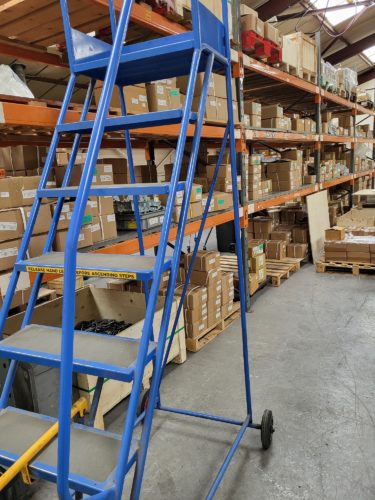Covid-19 was a big test to everyone’s supply chain; and it’s fair to say we’ve probably all had to learn some valuable lessons in terms of planning for the unexpected to future proof the supply chain.
Edwards Deming; acclaimed to be one of the founding fathers of total quality management, said about supply chain management that “without data, you’re just another person with an opinion”.
Source: www.everythingsupplychain.com
It is true, that data drives the decision-making process and is used to judge all parts of the supply chain in some way. We rely on a mixture of historical data as a tool to sense check demand; forecasted usage data from our customers and logistics and shipping data to make informed decisions to ensure you have stock on hand; when you need it.
Historical Data
If you rely on just historical usage without considering any other factor, then it can be hard to accurately manage the supply chain and you may be doomed to fail. That being said, it should still be used as a starting point to calculate forecasted usages going forward.
A number of customers send their monthly forecasted usage in for us to arrange the manufacture and supply of their items. To sense check their data, we look at historical averages for the same month and will discuss any outliers with the customer.
We know that in the UK boiler industry, for example, summer months tend to see a down-turn in demand as there is less demand for boilers in the warmer periods. Historically, we would know what to expect in these months, so will quickly see any spikes in demand which don’t fit the trend and we can discuss them with the customer to check if it is correct.
KANBAN Supply
We have some customers who place blanket purchase orders for items which could span 12 months, and they use a KANBAN inventory control system to tell us when to supply their stock.
In an ideal world, we would love to be able to manufacture these orders in full to cover the 12 months and stock hold this for all of our customers; but for cash-flow and storage purposes we have to manage the production line accordingly.
By looking at the usage over the last 12 months as a minimum, we know on average how many parts we have to keep in stock; with a buffer stock also held for a “rainy day”, so that when our customers’ KANBAN system requests stock; we have it to hand.
Minimum Stock Levels for Scheduled Customers
We know that bringing stock in “just-in-time” to meet the next week or month’s forecasted demand could lead to supply delays; as seen during the Covid-19 pandemic and the Suez Canal blockage, where stock was arriving weeks or even months late due to the subsequent port congestion.
Source: BBC News – Youtube
We offer stock holding for both Asia and UK manufacturing options, so any new demand will be subject to minimum production and shipping lead times; which in some cases could be a total of 16-18 working weeks.
By analyzing the usage data for our scheduled customers, we hold extra stock at Chartway UK, proportionate to around 1-2 months’ average usage, to account for such supply chain disruptions.
With a mixture of completed stock (in either the UK or Asia), in-transit stock (already on a boat or flight from Asia) and work in progress (or WIP); new stock to replenish the minimum levels should only be a few weeks away at all times.
Customer EDIs (Electronic Data Interchange)
Certain customers communicate their usages and schedules with us through the use of an online portal or EDI, where we can access live stock data and download delivery instructions to replenish the customer’s stock levels on site.
This data helps us plan production in order to keep the correct stock levels here in the UK.
We also use this to run internal stock analysis reports; so we can look for trends and track any changes to forecasts which could impact our stock holding.
For example, particularly in the boiler or automotive industries, builds on the production line can change quickly; which may require a completely different set of parts. If this is unexpected and the revised demand is over the planned usage by a substantial amount; we would have to discuss this with the customer to expedite the supply and react accordingly.
Chartway – Your complete supply chain solution
We have proven, over these difficult past 2-3 years, that we can keep your supply chain running smoothly.
With careful analysis of historical data and forecasted usages; we can manage your stock for you so you will always have stock available; when you need it.

